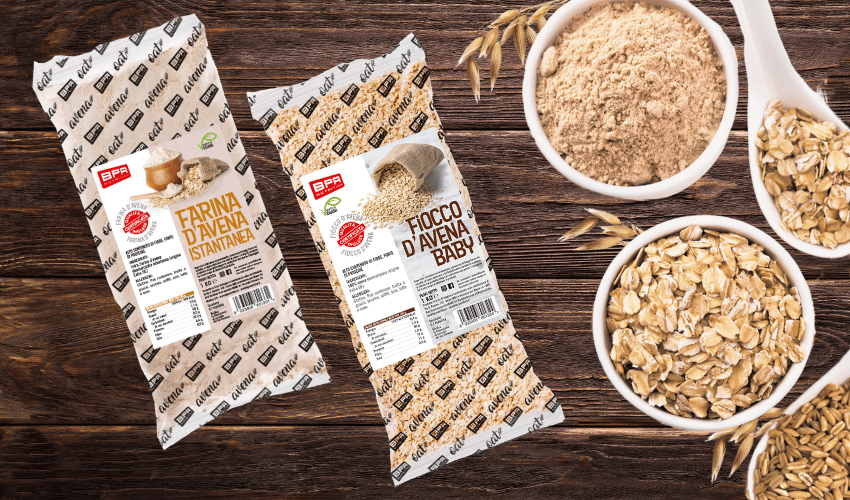.png)
GLYCAEMIC INDEX

 22/01/24
22/01/24
glycaemic index
The GI is a parameter that indicates the change in blood glucose in the 2h following the intake of 50g of carbohydrates contained in a food. Evaluating this parameter is easy if we ingest simple sugars (glucose, fructose, sucrose), but it becomes impossible with whole foods: fibre, fat, protein, water, cooking, etc. can significantly vary the rate at which we absorb carbohydrates in the digestive tract.
GI is measured by taking the average blood glucose after ingesting 50g of sugar from a food. This is compared to how blood glucose varies after ingesting 50g of glucose. The difference between the two changes indicates the glycemic index: Glycemic index= (food area / glucose area)x100.
The greater the glucose response and the greater the area under the curve, the higher the GI of a food. Carbohydrate sources with a low GI value are digested, absorbed and metabolised more slowly and cause a lower and slower rise in blood glucose and, hence, insulin levels. Foods with a high glycaemic index are absorbed more quickly and provide carbohydrates more rapidly.
The glycaemic index is an interesting concept, but it has also been heavily criticised and has limited practical relevance. The GI works well if we are dealing with isolated carbohydrate sources: glucose has a high GI, fructose a low GI.
We hardly ever consume isolated carbohydrate sources and we normally combine different foods when we eat and it is rather unpredictable what will happen when we combine various foods with different GIs. For example, adding relatively small amounts of fat to a high-GI carbohydrate can substantially lower the GI of the food;
THE GLYCAEMIC LOAD
The glycaemic index is thus an entirely artificial parameter, impossible to calculate in a real everyday meal, which is why the glycaemic load was introduced, which takes into account both the type of sugar but also the amount. The potato has a higher glycaemic index than pasta, but a lower glycaemic load because it is mainly made up of water (it has 19g of carbohydrates per 100g), whereas pasta is mostly made up of starch (it has 75g of carbohydrates per 100g) .
Glycaemic load= (GI x carbohydrate content)/100
The glycaemic index offers only a qualitative indication of the sugars present, the glycaemic load a combination of quality and quantity. For diabetics (whether diabetes I or II), it is the load value and not the index of a food that should be taken into account. Foods are generally divided into low glycaemic index foods (such as beans, peas, quinoa, apricots, fructose), moderate glycaemic index foods (kiwi, orange juice, spelt) and high glycaemic index foods (white bread, potatoes, watermelon, cooked carrots).

For example, if we want to know the glycaemic index of cooked carrots, we compare 50 g glucose with 50 g carbohydrates in the form of carrots. To get 50 g of carbohydrates from carrots, a person would have to eat about 750 g of carrots. That's a lot of carrots to eat in one session. So the glucose response is still high if we eat carrots in normal amounts? This has led to the development of the glycaemic load that takes into account portion size. Finally, will fructose or cooked carrots (seen among the foods with the highest glycaemic index) make you fatter?
good' or 'bad' foods
The glycaemic index is often used to classify foods into 'good' or 'bad'. Generally, high GIs are classified as bad and low as good. This dichotomous thinking is problematic. Whether a food is good or bad depends on the context and foods should be selected according to the goals, taking into account many other factors.
In some cases, high glycaemic index foods are appropriate: the oxidation rates of high glycaemic index foods are higher and this would also mean easier digestion, faster absorption, less likely to cause gastrointestinal problems and more likely to be beneficial for performance
In other situations, it may be advantageous to select predominantly low glycaemic index foods to better manage blood glucose levels.
Low glycaemic index diets work because they limit food intake by avoiding very frequent foods at the table (pasta, rice, bread, potatoes, etc.). This leads the person to self-regulate by unconsciously eating less. Research with controlled studies has shown that not only do foods with a high glycaemic index not make people fatter, but also that diets with fewer carbohydrates and more fat do not bring advantages in weight loss.
The conclusion is that, unfortunately, the energy balance counts. High-GI foods do not make you fatter than low-GI foods with the same number of calories.
To stop at the glycaemic index is to believe that it is the carbohydrates and insulin that make you fat. It has been understood for several years now that there are no good or bad macronutrients and that insulin is not the key hormone for gaining weight or losing weight. If we move away from physiology and towards insulin resistance or type 2 diabetes, then the normal physiology is altered and the constantly elevated insulin level impairs our ability to lose weight.
In any case, it is important to remember that if there is caloric control, carbohydrates improve the body's affinity for glucose, not worsen it.
In summary, GI is a theoretical concept that can be useful for educational purposes and in some specific situations, but it must be interpreted and used with caution and there are limits.






![[carrello]](/layout/img/ico-cart_white.png)







